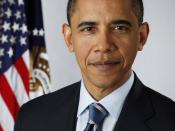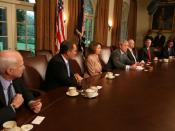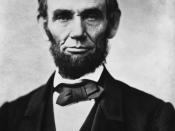1)Compare and contrast iron triangle and issue networks.
Iron triangle and issue networks are made up of agency officials, members of Congress and interest group of lobbyist. Most of the time, they includes lawyers, academics, consultants, courts and public relations specialists. However, issue networks are constantly changing as members and become involved in various issues. They reflect the problems and issues and trying to solve it.
2) Fully discuss the powers of the presidency. Be sure to give examples.
The framers want to have a strong central government and they don't want give the president too much authority to run the country. In the Article II, it states, "The executive Powers shall be vested in a President of the United States of America."
In Article II in the Constitution, the framers gave the president a few tasks that can be still use today In section 2 of Article II, it mentions the powers the President have such as: Commander in Chief of Army and Navy, to make Treaties, nominate and appoint ambassadors, Public Ministers, and Judge of the Supreme Court and all other officers.
He has the power to Pardon for Offences, convene congress, and veto any propose bills from the Congress.
3)Discuss the lawmaking function of Congress, including how a bill becomes a law.
The bill has to be presenting in both legislation, the House and the Senate before it can be passed as law. First, the House and the Senate have to introduce the bill and have it referred to the House and Senate Committee to its subcommittee, which will do a research on the bill and decided whether to hold hearings on it. The subcommittee hearing allows the both sides to voice their opinion on the bill. After the hearing, the bill is revised and the...


